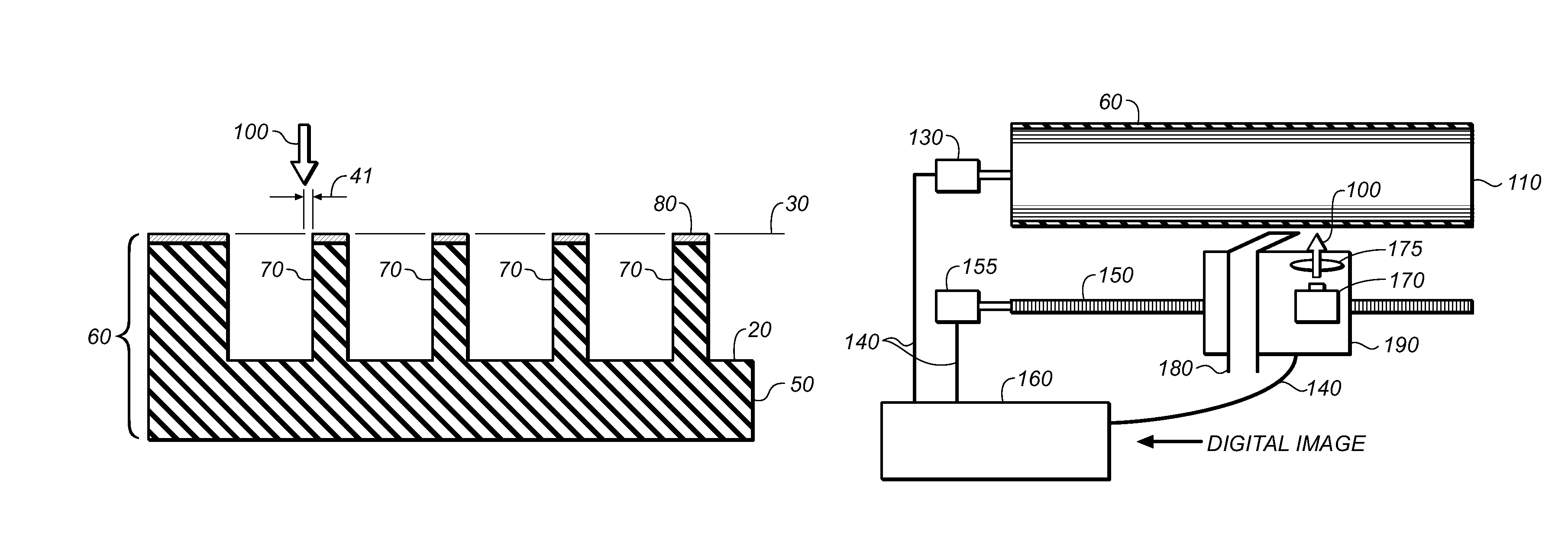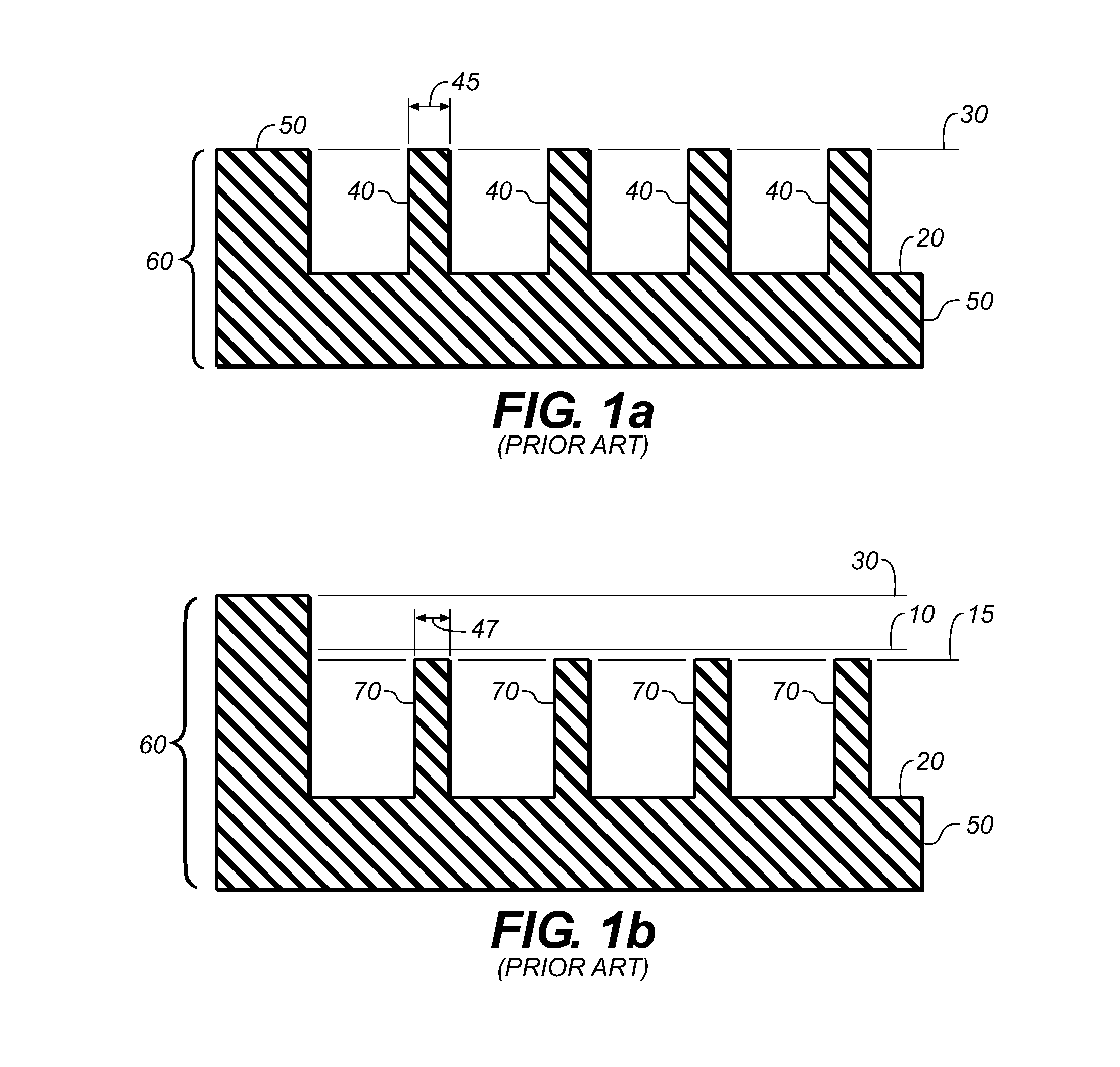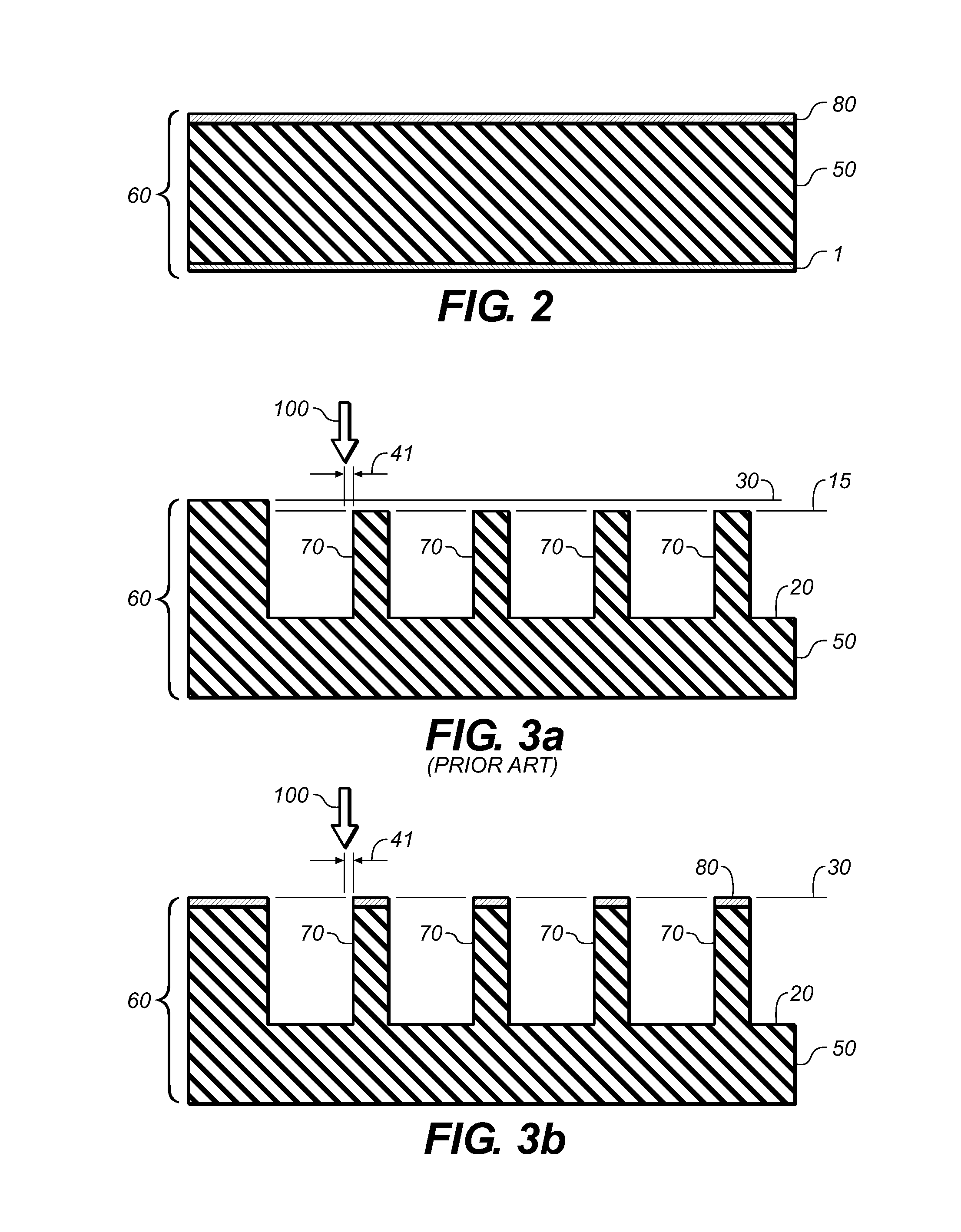System for direct engraving of flexographic printing members
a technology of flexographic printing and engraving system, which is applied in the field of flexographic printing, can solve the problems of reducing the sensitivity of heat ablation, reducing the heat ablation rate, so as to improve the heating uniformity and ablation sensitivity, the effect of reducing the amount of hea
- Summary
- Abstract
- Description
- Claims
- Application Information
AI Technical Summary
Benefits of technology
Problems solved by technology
Method used
Image
Examples
Embodiment Construction
Definitions
[0040]The following definitions identify various terms and phrases used in this disclosure to define the present invention. Unless otherwise noted, these definitions are meant to exclude other definitions of the terms or phrases that may be found in the prior art.
[0041]The term “flexographic printing precursor” refers to the material that is used to prepare the flexographic printing member of this invention and can be in the form of flexographic printing plate precursors, flexographic printing cylinder precursors, and flexographic printing sleeve precursors.
[0042]The term “flexographic printing member” refers to articles of the present invention that are imaged flexographic printing precursors and can be in the form of a printing plate having a substantially planar elastomeric topmost surface, or a printing cylinder or seamless printing sleeve having a curved elastomeric topmost surface. In the case of sleeves and cylinders heights and levels are, of course, in reference ...
PUM
| Property | Measurement | Unit |
|---|---|---|
| thickness | aaaaa | aaaaa |
| depth | aaaaa | aaaaa |
| thickness | aaaaa | aaaaa |
Abstract
Description
Claims
Application Information
 Login to View More
Login to View More - R&D
- Intellectual Property
- Life Sciences
- Materials
- Tech Scout
- Unparalleled Data Quality
- Higher Quality Content
- 60% Fewer Hallucinations
Browse by: Latest US Patents, China's latest patents, Technical Efficacy Thesaurus, Application Domain, Technology Topic, Popular Technical Reports.
© 2025 PatSnap. All rights reserved.Legal|Privacy policy|Modern Slavery Act Transparency Statement|Sitemap|About US| Contact US: help@patsnap.com



